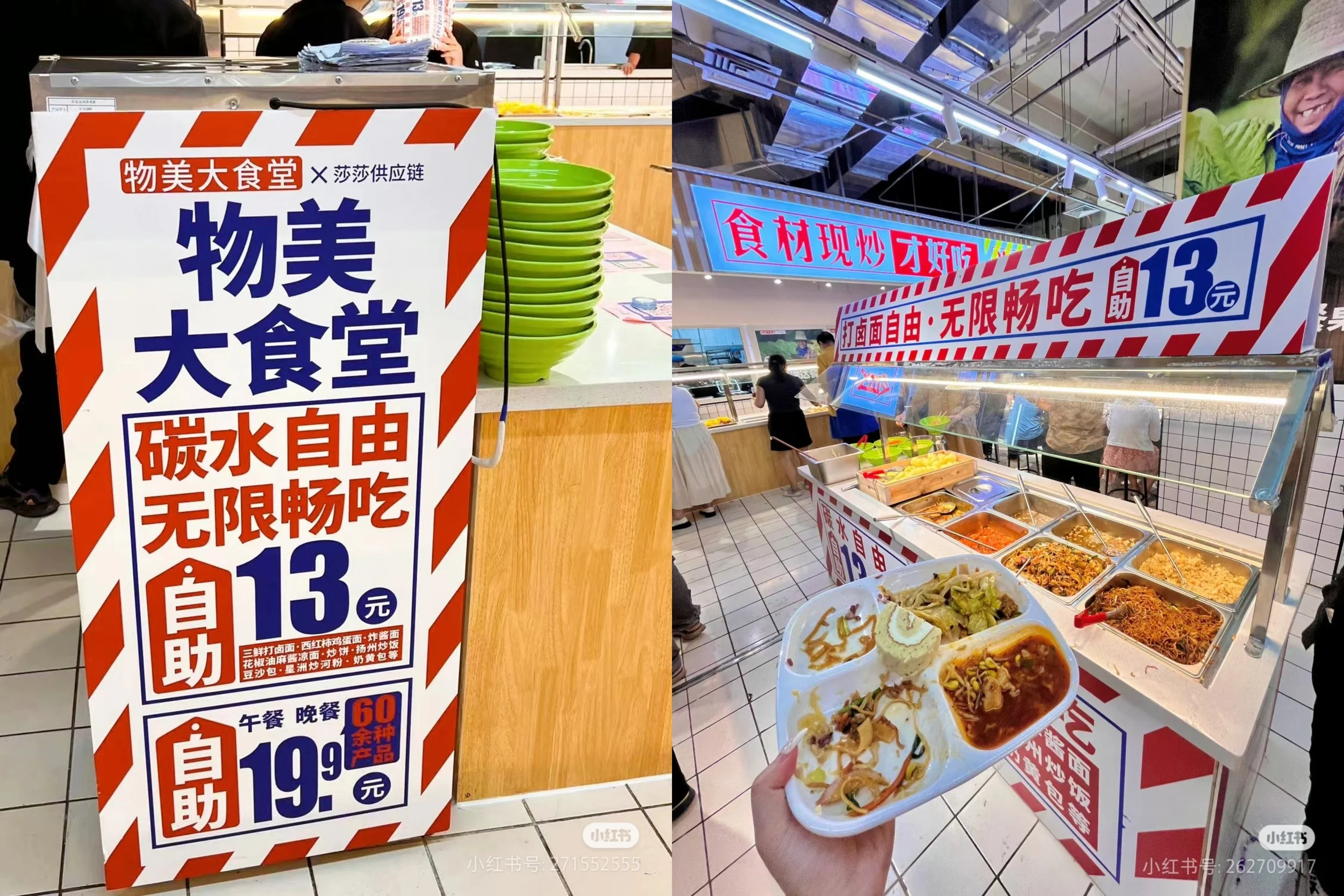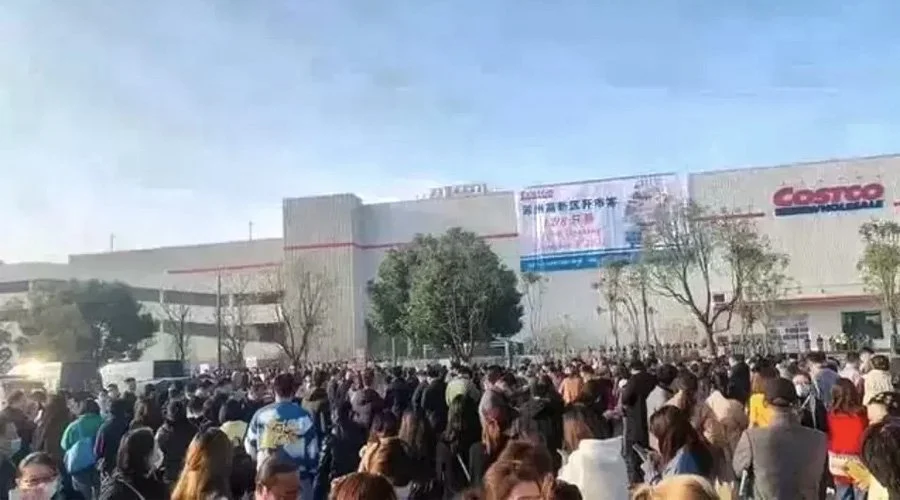Luxury at Wholesale: Does Sam’s Club Expand the Market or Undermine Luxury Brands?
Sam’s Club in China has become an unlikely hotspot for luxury shopping, with Burberry, Gucci, and Armani piled high in aisles once reserved for bulk groceries. The concept of “discounted luxury” is now fuelling a new shopping phenomenon: middle-class consumers, once accustomed to paying full price in flagship stores or even flying abroad for shopping sprees, are now scoring luxury goods alongside their weekly groceries.
But does this bulk-sale approach actually expand the market, introducing new customers to luxury brands? Or does it undermine brand prestige, turning once-exclusive goods into commodities?
A New Consumer Segment for Luxury?
Middle-Class Consumers Who Previously Wouldn’t Buy Luxury
For years, luxury brands targeted China’s affluent elite - the high-net-worth individuals who frequented flagship boutiques and indulged in “experience-driven” retail. But Sam’s Club is flipping the script, attracting a wider demographic of middle-class shoppers who:
Chasing value-priced luxury goods – They’re happy to buy a ¥14,999 ($2,070) Burberry trench coat at Sam’s, chasing a new type of status that comes with paying less for luxury.
Wouldn’t have normally bought luxury – Many are aspirational buyers who find the discounted price point justifiable, whereas full-price luxury felt out of reach.
Justify the purchase as part of “smart spending” – Buying a Burberry coat alongside bulk groceries makes it feel less extravagant, more practical.
For luxury brands, this could be an opportunity. By appearing in Sam’s Club, brands reach a customer segment that may not have previously engaged with high fashion. Some of these consumers may eventually trade up to full-price items, making them long-term brand converts.
Reaching Bargain Hunters, Not Brand Devotees
However, there’s a risk: the majority of these shoppers are driven by price, not brand loyalty. Many compare prices on their phones before making a purchase, treating luxury as a commodity rather than a statement of exclusivity.
For these consumers, luxury is no longer about identity or craftsmanship - it’s about securing a deal. This mindset could erode the emotional connection that brands have carefully built.
Does It Undermine the Prestige of Luxury Brands?
Luxury’s Traditional Appeal: Exclusivity & Brand Control
Luxury brands carefully manage their retail environments - from high-end flagship stores to personalized VIP experiences - to maintain their aura of exclusivity. This carefully controlled ecosystem is what allows brands like Hermès and Chanel to command premium pricing.
By placing luxury goods in a warehouse club environment, brands lose that control. Instead of:
Boutique experiences with personal shoppers, customers sift through stacks of designer goods in a fluorescent-lit aisle.
Scarcity driving desirability, inventory is piled high, turning luxury into bulk-buying.
Handpicked clientele, anyone with a ¥680 ($93.70) Sam’s Club membership can access steeply discounted items.
The optics of luxury goods being sold next to bulk groceries and home appliances could dilute brand prestige, making it harder to justify premium pricing in flagship stores.
A Race to the Bottom?
If luxury brands rely too heavily on discount-driven sales, they risk conditioning customers to wait for markdowns rather than buying full-price. This could:
Weaken the exclusivity factor that gives luxury its high margin.
Increase price sensitivity, reducing overall profitability.
Create internal pricing conflicts, where boutique shoppers feel cheated for paying more.
Some luxury brands may benefit from a short-term sales boost, but long-term, they could lose their pricing power if consumers expect permanent discounts.
A Smart Strategy or a Temporary Trend?
How Sam’s Club Wins Either Way
For Sam’s Club, the strategy is clear and effective:
Create a shopping destination for China’s middle class that feels both aspirational and practical
Leverage its global supply chain to offer discounts that competitors can’t match
Use luxury to drive foot traffic, encouraging customers to spend on bulk essentials.
Sam’s is not aiming to be a luxury retailer - it’s using big brands as a lure to strengthen its membership model and encourage repeat visits.
How Luxury Brands Can Play Smart
Luxury brands must be strategic about warehouse distribution:
Limited SKU Selection – Keep tight control over inventory to prevent brand overexposure
Exclusive Collections – Offer warehouse-specific product lines that don’t cannibalize flagship store sales.
Tightly Controlled Partnerships – Follow Costco’s model: brands like Hermès have worked with Costco on a limited, invitation-only basis to maintain a sense of exclusivity even in bulk retail.
If handled correctly, warehouse sales could expand luxury’s reach without diluting brand equity. If mismanaged, it could erode the perception of value that luxury relies on.
Final Thought: Expansion or Erosion?
The Sam’s Club luxury model presents both opportunities and risks for high-end brands. While it introduces new customers to luxury, it also threatens to shift consumer expectations toward permanent discounts.
Luxury brands must walk a fine line. They should leverage bulk retail to expand reach without undermining brand prestige. The key question is: will these Sam’s Club shoppers trade up to full-price luxury, or will they only buy when the discounts are deep enough?
In a price-sensitive market, brands that fail to manage perception carefully may struggle to hold onto their exclusivity - and in luxury, exclusivity is everything.































It wasn't long ago when every marketer in China was talking about ecommerce. Alibaba and JD battled it out for supremacy, and then another challenger, Pinduoduo, came from nowhere, and it became a three-horse race.Whilst the traditional ecommerce platforms still dominate online sales in China, the new world of livestreaming, KOLs and social commerce has dominated marketing forums over the past few years.